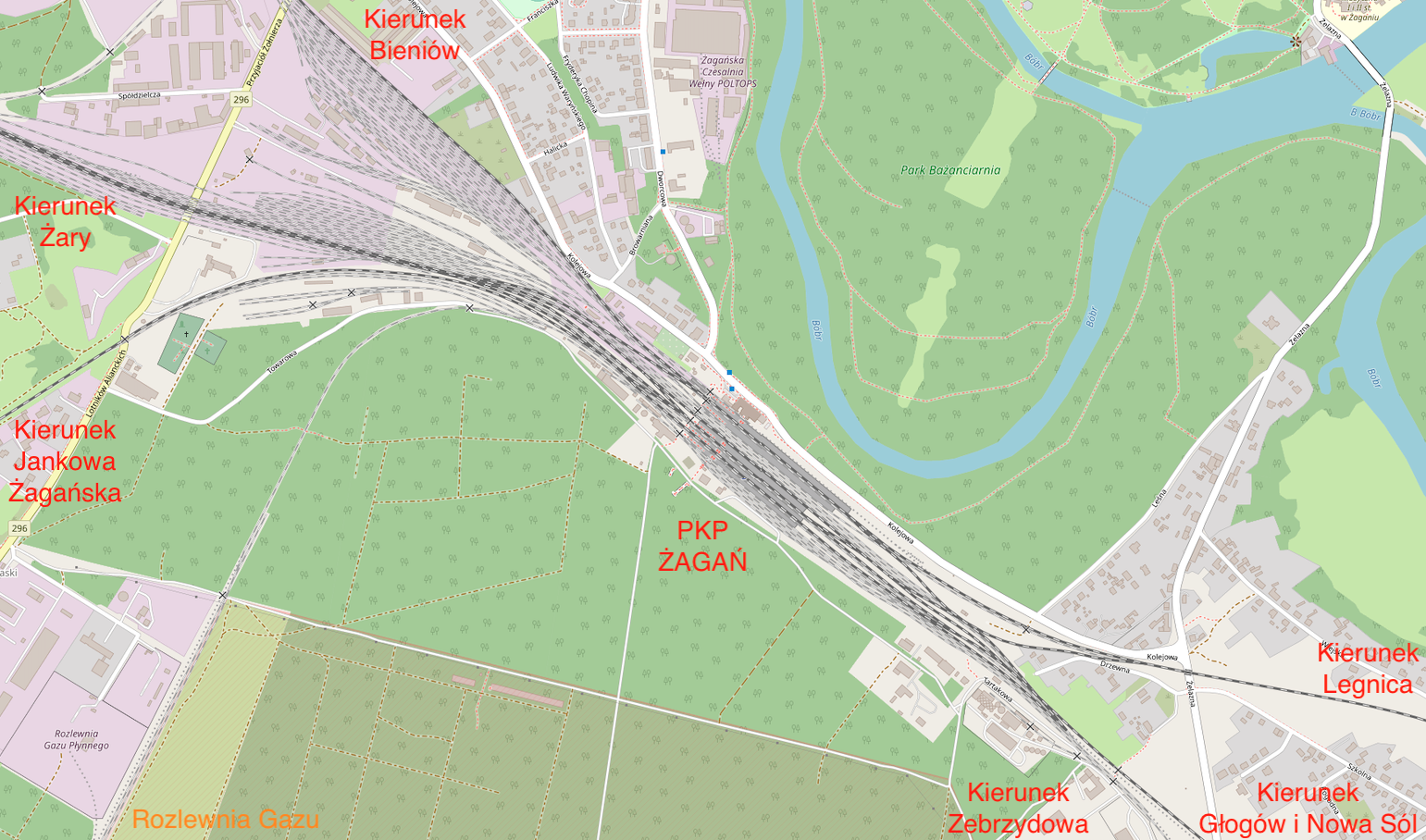Żagań 2022-04-21
Development of the Railway in Żagań.
Geographic coordinates: 51.604N 15.315E.

In January 1845, it was decided to build a railway route from Głogów to Żagań. The investment was supported by the Prussian King Frederick William IV. The investor was Towarzystwo Dolnośląsko-Marchij Kolei Żelaznej. The first train entered the station in Żagań from Głogów via Niegosławice and Szprotawa on July 26, 1845. The train brought rails and sleepers for the further construction of the railroad. The Głogów - Żagań route is 71 km long. Interestingly, the next section of the railway line was first laid to the village of Jankowa Żagańska, because its owner invested her funds. A further route towards the town of Żary was launched on November 1, 1846. At the same time, the Węgliniec - Żary railway line was launched. In 1875, a connection with Legnica and Wrocław was launched. New lines to Stypułowo and Kożychów were launched on October 1, 1890. A new line was opened to Świętoszów in 1905. Within 50 years, Żagań became a large railway junction with seven railway lines. The railway bridge on the Bóbr river exists until now, and it was built in the period 1845 - 1846. All new railway lines were built in such a way that it was easy to lay a second track, both on railway embankments and at bridge abutments. But finally the second track was given to the railway line: Żagań - Maroszów - Żary - Sieniawa Żarska.
The railway bridge over the Bóbr River is one of the most beautiful technical monuments. It was built as a stone and brick one. It is approximately 200 meters long and approximately 10 meters wide. The bridge is set on 19 supports, about 10 meters high. The width of the bridge provides for the laying of two tracks, although there is only one track at present. It is possible that at the end of the war, the Soviets turned one track into "wide", and when they no longer needed it, they stripped it and took it to the CCCP.
The first wooden railway station building in Żagań was built in 1845. In 1876, the station burned down completely. The rebuilt building functioned until 1913, when a new station was built, which still exists today (2022). Initially, the station was called the City Railway Station. The station houses ticket offices, luggage offices, a waiting room, a buffet, toilets and more. The ticket offices are closed, but there are ticket machines at the station. The last renovation of the station building was carried out in the period 2017-2019. The official opening took place on May 10, 2019.
Around 1986, a large control room that still exists today was built. At the beginning of the 20th century, the station expanded considerably. There were two water towers, several water cranes, a locomotive depot with a fan-shaped firehouse, a hump, five island platforms, a tunnel for travelers, a service tunnel for railway workers, a night shelter for railway workers, a liquid fuel station for diesel locomotives, a wagon wash, track lighting, unloading ramps, storage yards, warehouses and others. Each platform is equipped with a steel shelter, the structure of which is riveted. The roof is covered with boards and roofing felt. The fan locomotive with a turntable, located in the western head of the station, has not been used since around 2010, and was dismantled around 2016. The station slope is huge and forms a group as if of several stations. From the front of Platform 1, on a blind track, there is an Ok1-198 steam locomotive, which is a museum exhibit and a monument to technology.
Currently (2022) the following railway lines run through Żagań: railway line No. 14 Łódź Kaliska - Forst / Baršć, railway line No. 275 Wrocław Muchobór - Guben, railway line No. 283 Jelenia Góra - Żagań, railway line No. 371 Wolsztyn - Żagań, railway line railway No. 389 Żagań - Jankowa Żagańska. In Żagań, freight traffic is high, and passenger traffic is low, served mainly by diesel multiple units. The railway junction in Żagań is not electrified, which is why steam locomotives have dominated here for many decades, and diesel locomotives have joined them for 60 years.

Written by Karol Placha Hetman
